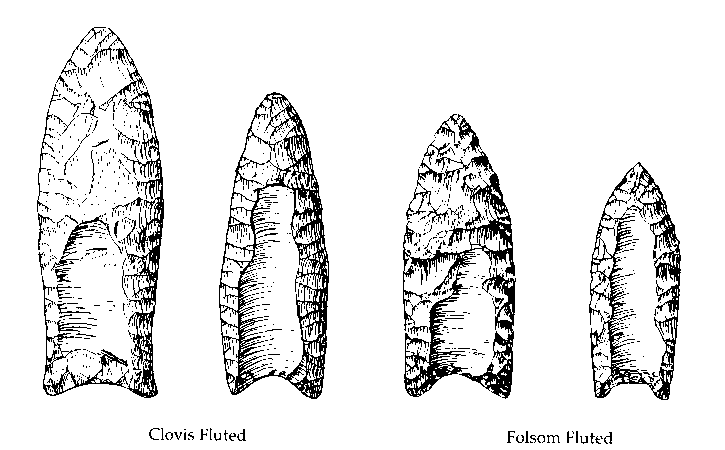
|
The Mamoth and other megatherms hunted by the early Amerindians.
|
James Hutchison Archaeology of Missouri The paleoindian site at Kimmswick is, in my opinion, important for two major reasons. The first reason is simply that the discoveries made there demonstrate the contemporary existence of paleoindians and megatherms of the Pliocene era in North America and that these peoples hunted/killed these megatherms.  Tools of the Clovis type were found in context with mastodon remains, and in one case a Clovis point was found ?within? a mastodon?s skeletal remains, near the pelvis. These tools, including projectile points known to have been used on atlatl shafts and as knife blades, indicate that the Kimmswick site was, at the least, a kill/butcher site.  The presence of drills, scrapers and implements used to produce the various tools would also indicate at least a temporary camp. In addition to these facts, there also exists oscules that are known to be a physiologically unique characteristic of the giant ground sloth. However, there are know indications that these sloths were killed at this site.  The absence of sloth skeletal material poses a question as to why only the oscules would be present. As the oscules were imbedded in the skin of the animal it appears that only the skins were present. This might indicate they were transporting only the meat with the hide still attached, or that they were using these hides, after processing the animal at another location, for shelter covers or some utilitarian purpose. Whatever the case, our visit to the site posed more questions than answers for me. |
We appreciate your comments and suggestions. Please E-MAIL us.

� 1995 1997 1998 1999 2000 by Hutchison Research Center. All rights reserved.
Have a topic or question for discussion? Join our free discussion forum!
Back to Hutchison Research Center Contents Page

Back to Hutchison Research Center Home Page
